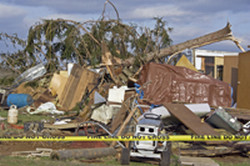Time to manage natural disasters
In recent decades, the economic loss and social hardship inflicted by extreme climate and weather events have increased substantially according to the latest research. From floods and rogue waves to earthquakes and heat waves, EU governments and authorities are on the lookout for strategies to reduce hazards and adapt to this new reality. The EU-funded project 'Capacity development for hazard risk reduction and adaptation' (CATALYST)(opens in new window) rose to the challenge. Working on expanding knowledge exchange on reducing hazard risks and adapting to climate change, the project compiled and analysed the latest on the topic worldwide in order to support concerned policymakers and stakeholders. It sought to document knowledge on risk management that explores issues related to water resources, land use planning and economic development. The focus was on diverse regions around the world. These were Central America and the Caribbean, East and West Africa, the European Mediterranean, and South and South-East Asia. To achieve its aims, the project team formed a think tank of 120 regional experts to create key knowledge products that could benefit those working on disaster risk reduction and adaptation. Regional experts articulated the needs and best practices for their region while encouraging international exchange among the different regions and strengthening the science-policy interface. Several valuable reports emerged from the project, including one on issues, gaps and opportunities in the regions. A report detailing stakeholder advice to policymakers was also published. Four regional best practice papers entitled 'Before Disaster Strikes: Transformations in Practice and Policy' were produced. Lastly, CATALYST produced a policy notebook of best practices to support decision-makers and practitioners in anticipating, managing and reducing the risk of natural hazards. These reports and others produced by CATALYST are available from Best Practices Policy Notebook(opens in new window).







